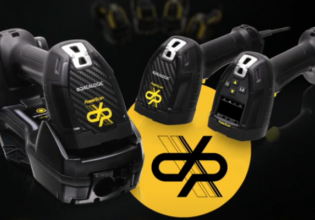AMP Robotics Strikes Back with Latest AI and Computer Vision-aided Recycling Solutions
AMP Robotics has announced the release of its latest AI and computer vision-backed automated recycling technologies to help material recovery facilities improve process workflows.
The modernist recycling solutions provider, AMP Robotics, announced the release of its latest AI-driven technologies for material recovery facilities. The company’s latest innovations come in the form of a space-saving version of AMP’s standard automated picking and sorting system, the Cortex, and advanced algorithms for optimizing the robotic gripping of recyclable materials.

AMP's standard automated picking and sorting system, the Cortex. Image used courtesy of AMP Robotics
Combating Plastic Pollution
According to the U.S. Environmental Protection Agency’s 2021 report, the U.S. produced 292.4 million tonnes of trash (or municipal solid waste), with 93.5 million tons comprised of composted, recycled, and landfill-diverted material. This equates to a recycling rate of 32.1 percent. While this is something, recycling efforts need to go up a gear to reduce the amount of unrecycled waste entering our oceans every year, which comprises around 8-10 million metric tons of plastic.
Companies like AMP are revolutionizing the automated picking and sorting of recyclable materials to combat plastic pollution and reclaim disposable revenue to rechannel into the economy. Allowing AI and computer vision-aided machinery to process waste materials can improve efficiency, reduce downtime and error, and save on labor costs.

The threat to the world’s lands and oceans looms large with the ever-pervading threat of pollution from poorly recycled waste. Can AI and robotics provide us with a solution? Image used courtesy of Pixabay
Automated Sortation
AMP’s standard Cortex system is a robotics sorting system that uses computer vision and advanced machine learning (ML) algorithms to pick out and sort recyclables for reuse. Images of waste materials are taken with cameras and sensors before using dedicated AI algorithms to process them. After evaluating materials and identifying those suitable for recycling (using parameters like size, texture, and color), robotic arms pick and deposit materials into specific bins to be processed further.
Both image and AI processing is made possible through AMP’s Neuron platform. AMP Neuron can recognize more than 50 billion objects during recyclable processing each year. The use of ML allows robotic systems to learn and improve material identification and classification through repetitive tasks and exposure to real-world conditions. By using this kind of AI-based sorting system, robots in material recovery facilities can sort various materials, from plastics to glass, metals, and paper.

AMP is striving to modernize the existing recycling infrastructure through AI and computer vision-backed robotics solutions. Video used courtesy of AMP Robotics
AMP Cortex-C
AMP's Cortex-C system is a space-saving iteration of the existing Cortex system and has been designed to integrate with different conveyor belt sizes and layouts. Downtime is reduced without the need for retrofitting to complete installations, which can be executed in a couple of days. As with the standard Cortex system, Cortex-C shares similar working components and parts and comes with negligible service expectations to standardize fleets across the shop floor.
With a global fleet of over 300 Cortex-C systems in action, the embedded AI is continually learning and adapting to enhance system sorting capabilities.

AMP's AI - Advanced Targeting algorithms optimize robots' grip so they can handle different objects. Image used courtesy of AMP Robotics
Advanced Algorithms
AMP is not only employing ML for machine vision and the purpose of sorting materials but for optimizing the grip of robots so that they can handle different objects based on condition (for example, when objects travel down the conveyor belt, they may be misshapen) and specific structural properties. AMP’s latest AI - Advanced Targeting algorithms will use ML in this fashion across both Cortex and Cortex-C units deployed worldwide.
A Planet for the Future
AMP uses the power of robotics and AI to help global industries recover reusable commodities from waste that might otherwise end up in landfill sites and, eventually, surrounding habitats. By employing AI and computer vision to fine-tune recyclable material picking and sorting, AMP endeavors to help material recovery facilities improve processing workflows and the world at large to reduce waste, conserve resources, and take better care of our planet for future generations.






